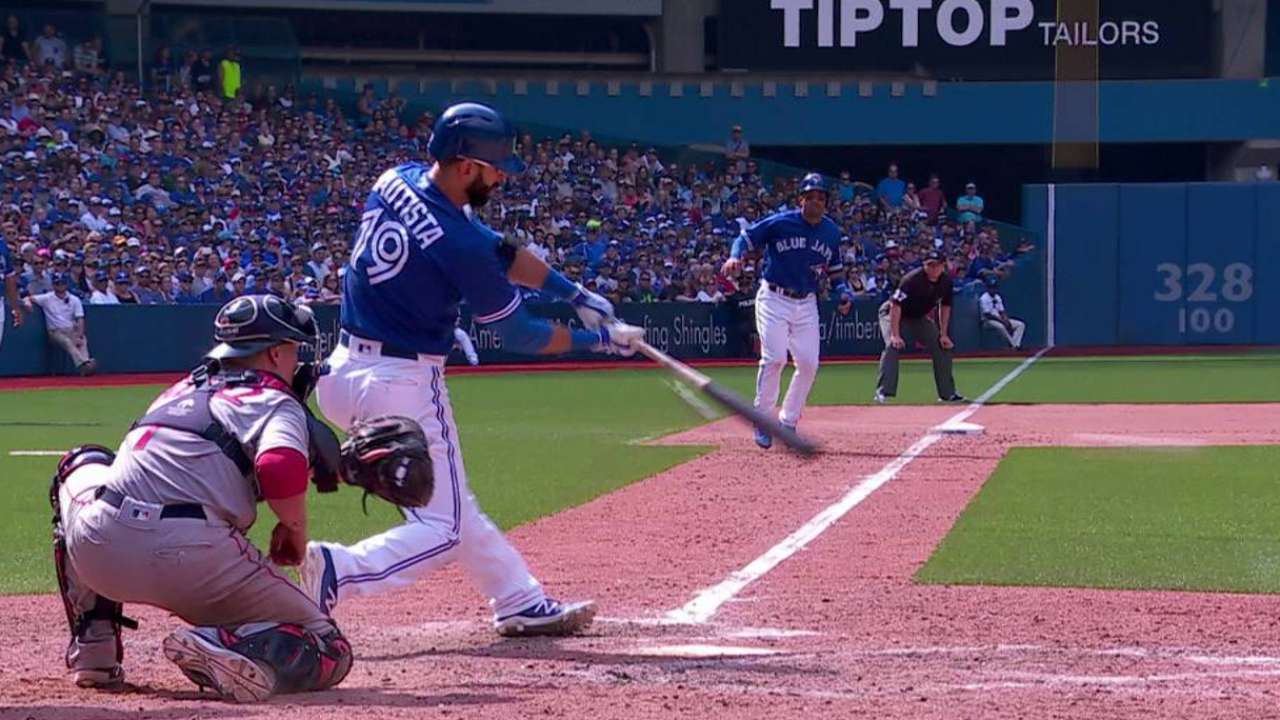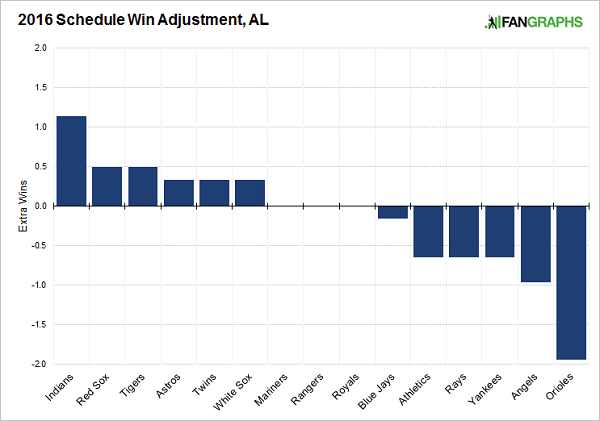The dust has just about settled on this year’s trade deadline; now attention firmly switches to the race for the postseason and a playoff berth. Nowhere is that race tighter currently than in the AL East, with the Red Sox, Blue Jays and Orioles all legitimate contenders for the division crown. Indeed, the AL East looks set to take over the mantle previously held by the NL Central as the only division to offer a genuine three-horse race for the pennant.
So, how has the month of July, both in terms of each club’s record and moves off the field, impacted the pennant race?
Let’s start with the perennial focus of every trade deadline: Pitching.
The Orioles, despite their division lead, had a quiet July adding only Wade Miley from the Mariners in exchange for prospect Ariel Miranda. Miley, the proverbial innings-eater, represents solid back-end depth for the O’s, a certain upgrade over struggling Ubaldo Jimenez but hardly a starter to transform the strength of a rotation. The Orioles were rarely mentioned to be in “buy” mode and never in conversations over the top pitching options available on the market, perhaps an indication that both the Orioles and the rest of the league do not expect their division lead to last.
The Red Sox did their business early, yet left their fans to feed off tantalizing rumors of a potential deal for Chris Sale. Had that deal taken place the Red Sox would have traded much of Portland and Salem over to the White Sox for an undeniable ace, but as ever, just one Tommy-John surgery away from ruin. An interesting thought on Dombrowski’s tactics here, could deliberately failing to quash the Sale rumours have been an attempt to maintain the strength of sellers in a hope to further inflate prices for fellow buyers?
Instead Drew Pomeranz, alongside bullpen depth in Brad Ziegler, Fernando Abad and veteran utility man Aaron Hill represented the extent of the Red Sox’s July deals. Pomeranz solidifies the Sox rotation, who hope to ride his 2016 form into the postseason. When combined with Price, Wright and Porcello, the Red Sox hope to get quality starts at least 60% of the time for the offensive juggernaut to exploit.
That leaves us with the Blue Jays who made an intriguing move right at the deadline. As the data below shows, the Blue Jays possess the strongest rotation among the contenders in the AL East. But the innings limit of Aaron Sanchez, the strongest in the Jays rotation, hangs over the club heavily. The acquisition of Francisco Liriano from the Pirates minutes before the deadline represents the chosen solution with Sanchez likely returning to the bullpen soon. Liriano has endured a truly terrible 2016, with a -0.4 WAR, 5.27 FIP and 5.46 ERA. In 2015, 24.3% of the contact Liriano induced was Hard, that has now risen to 35%, with hitters now pulling the ball 30.8% of the time as opposed to 14.3% in 2015. What’s more worrying is that this shift is not caused by a lack of velocity; hitters are simply adjusting to Liriano better as August Fagerstrom explains. If and when Sanchez is forced to go back to the ‘pen, the Jays’ advantage in the rotation may begin to disappear.
An analysis of each contender’s rotation strength reveals the reasoning behind the lack of aggression from the Orioles at the deadline. When compared to the Orioles’ division rivals, the rotation is a clear flaw, and more importantly, a flaw that no single starter, let alone one Wade Miley, could resolve:
| AL East Contenders Starting Rotations (AL ranking) | ||||
| FIP | BB/9 | BABIP | WAR | |
| Orioles | 4.73 (12th) | 3.55 (15th) | .308 (11th) | 5.2 (11th) |
| Red Sox | 4.32 (6th) | 2.97 (8th) | .307 (10th) | 7.2 (8th) |
| Blue Jays | 4.15 (4th) | 2.84 (5th) | .268 (1st) | 10.0 (1st) |
Across the board the Orioles fail to match up to either the Red Sox or the Blue Jays for quality of starting pitching. The Jays hold a clear lead in this department, however, with the impending loss of Aaron Sanchez from the rotation, there appears to be little to choose between the Red Sox and the Blue Jays here.
Now to switch to the other side of the coin: Offense
Ironically, the most significant offensive development among these three clubs did not occur with a trade, but instead a call-up. Andrew Benintendi joined the Sox in Seattle in an initial platoon role in left with Bryce Brentz, yet there is reason to believe this arrangement will not last for too long.
| AL East Contenders Offense (AL Ranking) | |||||
| Runs | BABIP | wRC+ | Off | WAR | |
| Orioles | 492 (6th) | .306 (4th) | 103 (5th) | 19.3 (3rd) | 14.3 (5th) |
| Red Sox | 576 (1st) | .325 (1st) | 117 (1st) | 91.4 (1st) | 23.6 (1st) |
| Blue Jays | 519 (2nd) | .287 (12th) | 104 (3rd) | 13.5 (5th) | 18.1 (3rd) |
Here the first clear separation between the three clubs is obvious with the strength of the Red Sox offense that comfortably leads the American League in almost all categories. All three clubs play a similar brand of baseball, offensively minded and designed to win games 10-9 as opposed to 2-1.
Perhaps here lies the reasoning for the Orioles 2016 success; the Orioles bullpen leads the Blue Jays and the Red Sox with a 4.2 WAR and 5.38 CLUTCH rating. The Orioles have been more successful in converting 10-9 leads into wins from the strength of their bullpen, thereby bypassing their obvious weakness in starting pitching. For the Red Sox and Blue Jays to win consistently, their plan is to bury teams in runs, making pitching fragility irrelevant.
The road ahead:
Although the New York Yankees and Tampa Bay Rays won’t be making the postseason this year, they will still have an instrumental role in deciding who represents the AL East in October. Crucially for the contenders, yesterday’s deadline made the Yankees in particular significantly weaker for the rest of this year. The loss of Carlos Beltran, Ivan Nova, Andrew Miller and Aroldis Chapman means the Red Sox, Blue Jays and Orioles must take advantage of remaining games against the Yankees. The Rays already represent a depleted force, but with the further loss of Matt Moore to the Giants, they look ripe for sweeps from now until September. Beating up on in-division rivals and simply not losing to the non-contenders is the game-plan for all three franchises now.
It would also appear that the Red Sox do enjoy an advantage in the strength of their remaining schedule, with Fangraphs giving the 0.5 extra wins over the course of the year on the easy path ahead. The Orioles interestingly are pegged to lose 2 more games than they normally would because of the tough schedule. 2 games will almost certainly be the difference between a playoff berth and a premature offseason in this divisoin.
So who holds the advantage, if anyone?
The Orioles look most likely to slip off the pace, despite their current 1 game division lead. With the strongest schedule and weakest rotation, the Orioles may have to focus only on the wild-card hunt come late September.
The Red Sox and Blue Jays looked primed to fight it out for the AL East crown, with the Aaron Sanchez innings limit rapidly approaching and the Red Sox offensive juggernaut showing no signs of slowing down, a very slight advantage would have to be given to the Red Sox.
What should be noted for all the contenders is what lies around the corner should they make the postseason – the Indians, Rangers and finally potentially the Cubs represent a frightening path to the World Series – one that is simply too daunting for the championship to head back to the AL East this October.
-Andrew Poole






